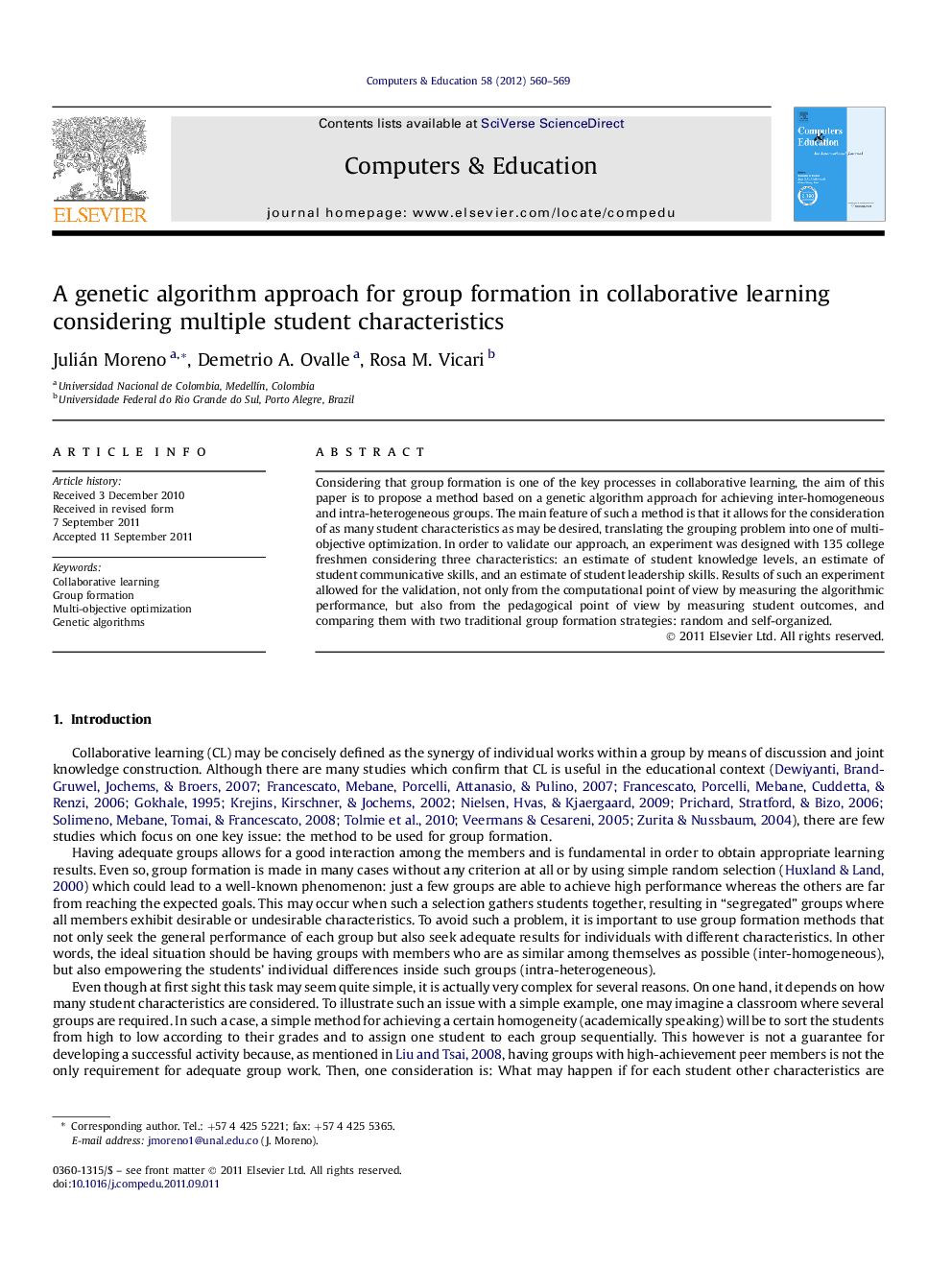| Article ID | Journal | Published Year | Pages | File Type |
|---|---|---|---|---|
| 349011 | Computers & Education | 2012 | 10 Pages |
Considering that group formation is one of the key processes in collaborative learning, the aim of this paper is to propose a method based on a genetic algorithm approach for achieving inter-homogeneous and intra-heterogeneous groups. The main feature of such a method is that it allows for the consideration of as many student characteristics as may be desired, translating the grouping problem into one of multi-objective optimization. In order to validate our approach, an experiment was designed with 135 college freshmen considering three characteristics: an estimate of student knowledge levels, an estimate of student communicative skills, and an estimate of student leadership skills. Results of such an experiment allowed for the validation, not only from the computational point of view by measuring the algorithmic performance, but also from the pedagogical point of view by measuring student outcomes, and comparing them with two traditional group formation strategies: random and self-organized.
► A novel method for achieving inter-homogeneous and intra-heterogeneous groups. ► It allows for the inclusion of as many student characteristics as may be desired. ► It is efficient from a multi-objective optimization perspective. ► It does not require large computational resources. ► It was successfully validated in a real educational environment.
